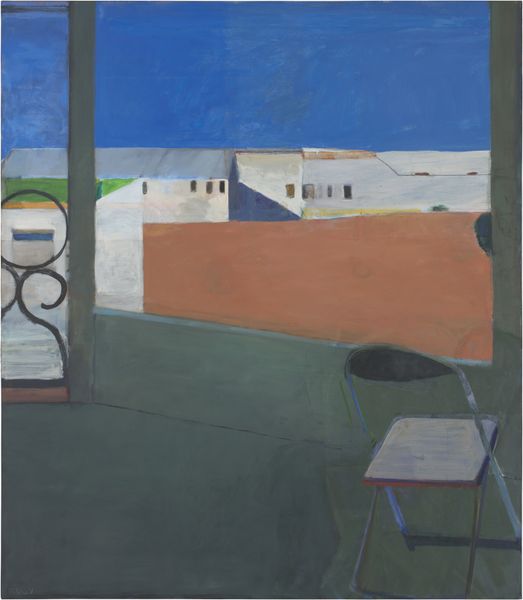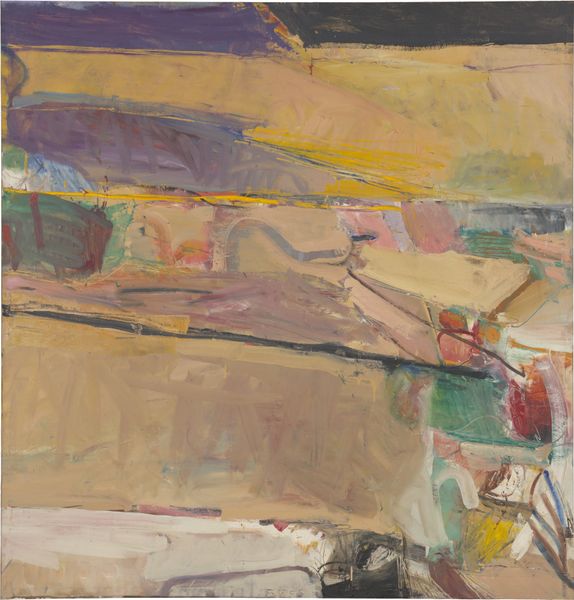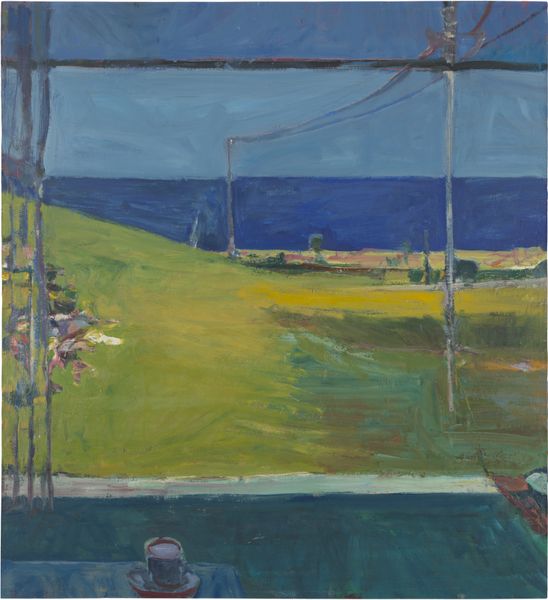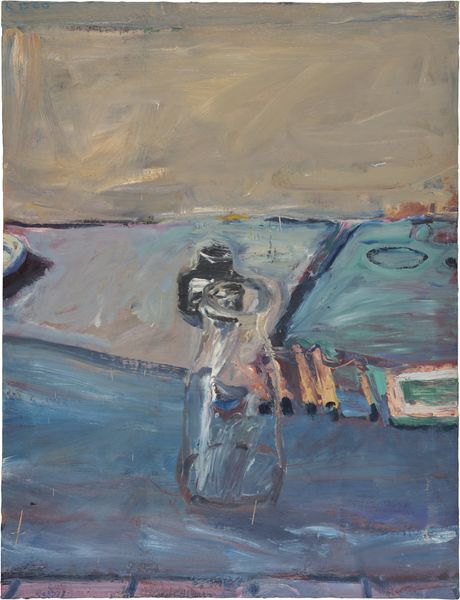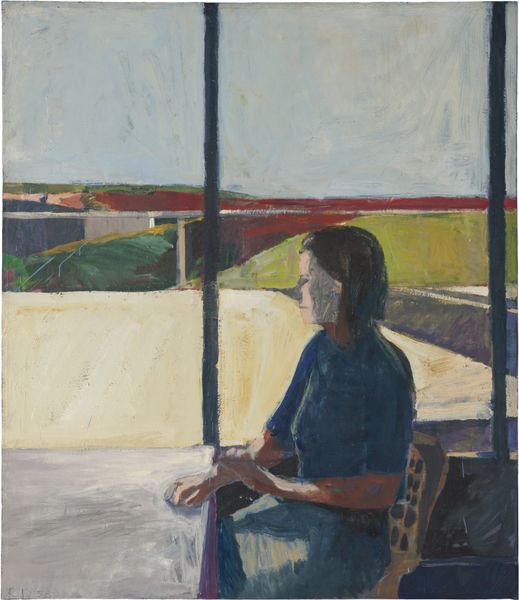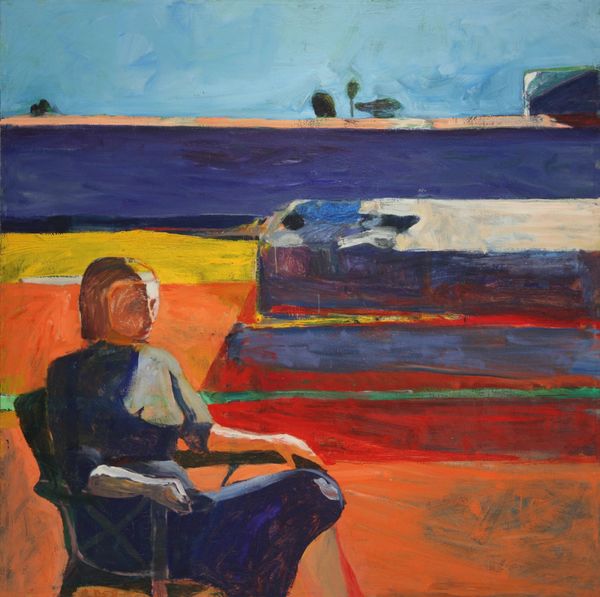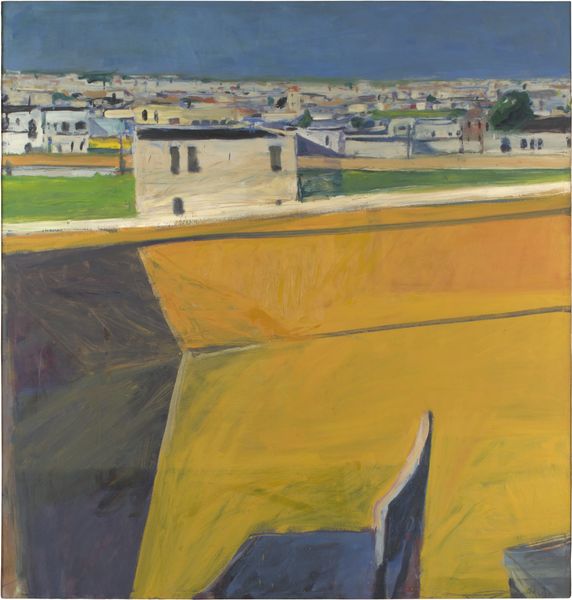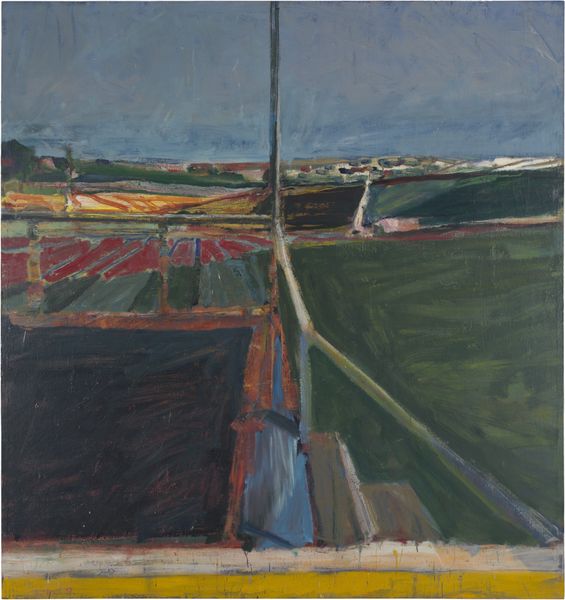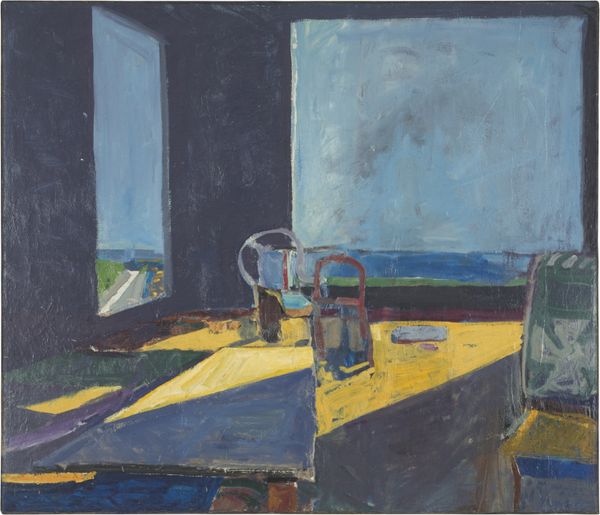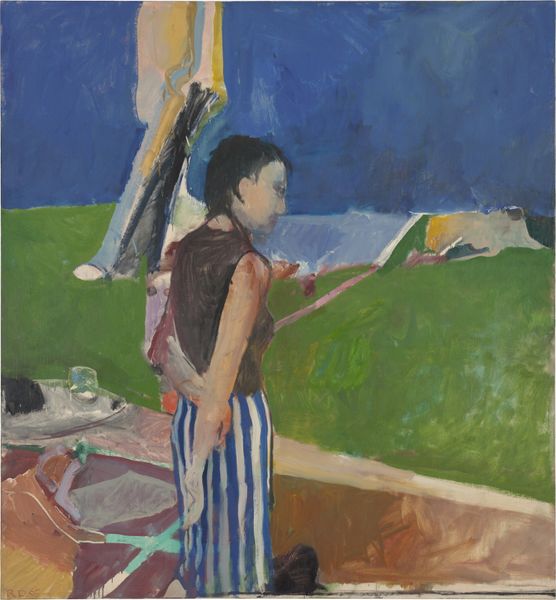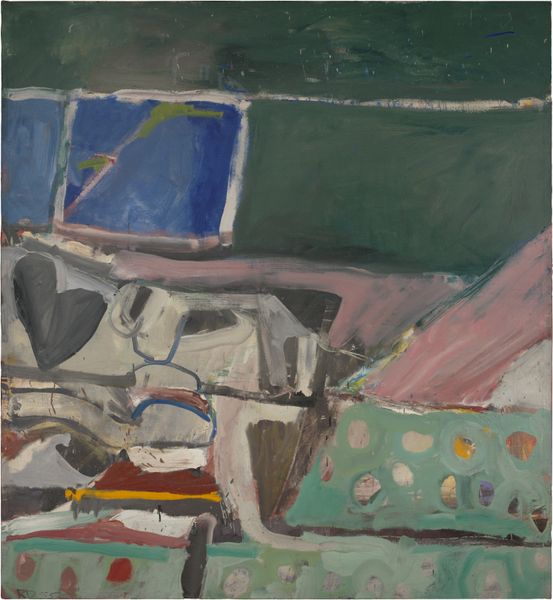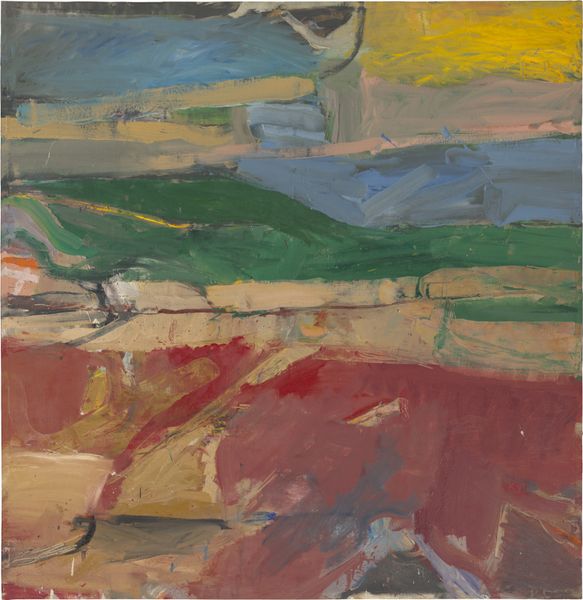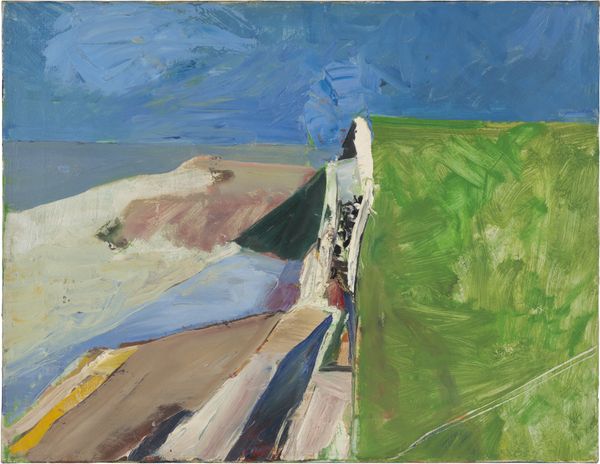
painting, oil-paint, acrylic-paint
#
painting
#
oil-paint
#
acrylic-paint
#
figuration
#
oil painting
#
bay-area-figurative-movement
#
acrylic on canvas
#
abstraction
#
cityscape
#
modernism
#
watercolor
Dimensions: 213.4 x 170.2 cm
Copyright: Richard Diebenkorn Foundation
Curator: Immediately, this painting feels enclosed, almost claustrophobic despite the distant vista. Editor: Indeed, the work, “Interior with View of Buildings,” created in 1962 by Richard Diebenkorn, does present an interesting dichotomy between interior constraint and external freedom, a common theme in postwar art reflecting existential anxieties. Diebenkorn utilizes both oil and acrylic paint here. Curator: Looking at the artist through a critical lens, the view almost seems a commentary on privileged observation—someone safely within, gazing out at a sanitized cityscape, disconnected from the realities of urban life that are experienced quite differently depending on socio-economic status. The limited palette emphasizes the almost dream-like detachment. Editor: It’s also fascinating to consider how Diebenkorn himself was shaped by the art institutions and critical dialogues of his time. Think about the Bay Area Figurative Movement he was part of. They navigated a fascinating path between abstract expressionism and representational art. The choice of such subdued colours might relate to how, at the time, American culture valorized ideas of conformity and social harmony in response to social fragmentation caused by war, and that those themes permeated every medium of creative production. Curator: Absolutely. Even the very composition--the arrangement of shapes, the play between flatness and implied depth--it can be viewed as a challenge to traditional perspective and spatial representation itself. It asks, “Who gets to define reality?” “Whose perspective is privileged?”. Those seemingly abstract choices have real consequences on our understanding of the world. Editor: His exploration of pictorial space definitely resonated with his contemporaries grappling with similar concerns. Looking at this today, I feel it prefigures conversations that started becoming widespread decades later surrounding visual representation and who and what exactly is legitimized, but at the time would have certainly carried subversive meaning when the rules were so clearly defined by institutions. Curator: This work offers a compelling case study on how artists, even when appearing to engage with purely aesthetic concerns, reflect and shape the complex social landscape. Editor: Indeed. It gives us much to ponder, both about Diebenkorn's era and our own.
Comments
No comments
Be the first to comment and join the conversation on the ultimate creative platform.
